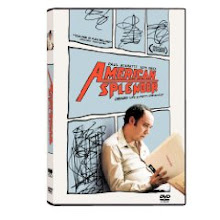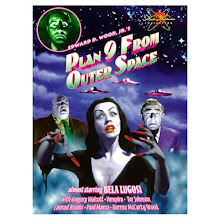by Jason Pyles
In late March, the official podcast of this site — the Considering the Sequels podcast — will have a bonus episode on “Extreme and Shock Cinema.” (We’ll post it at ctspodcast.com in April.) We’re going to investigate the morality, utility and social repercussions of filmmaking that graphically depicts the dregs of human depravity. Our discussion won’t be for the faint of heart, so be ye warned.
Though comparatively mild it may be, the infamous Japanese film, Batoru rowaiaru — aka “Battle Royale” (2000) still falls upon the fringes of this extreme, macabre film movement.
Reading from the Internet Movie Database’s plot description, “In the future, the Japanese government captures a class of ninth-grade students and forces them to kill one another under the revolutionary ‘Battle Royale’ act.”
So what you’ve got here, is a dystopian society, of sorts, where military-types gather a group of 14-year-old kids into a room and explain that they have to engage in mortal combat, in an every-man-for-himself, last-man-standing fight to the death. And to illustrate their seriousness, the military instructors kill a kid or two in front of their classmates to demonstrate that the same fate will surely befall them if they don’t participate.
So, these kids must fight or die, with the objective to kill every last person — even friends, love interests and siblings. No mercy. The solitary winner will be set free. Each child is given a small “kit” that includes one weapon. These weapons vary in their utility. Some “weapons” really aren’t weapons at all. And most of the kids aren’t natural-born killers, though they must learn quickly or else.
The violence is fairly graphic, which is unsettling, since the perpetrators and victims are so young.
You might have guessed that, upon its release, this film instantly became a cult classic. And really, it is “a trip” to watch. It’s a little hard to believe your eyes sometimes. It’s just so weird.
As I’ve thought about “Battle Royale” and other entries of extreme cinema, I’ve noticed that these films and the milder horror genre, in general, reduce down to two primal elements: fear and sorrow.
Through myriad illustrations of unthinkable violence, extreme cinema and the horror genre are fueled by intense fear and profound sadness. Now, these movies aren’t for everyone. I’m personally not even into regular horror movies, really — let alone shock cinema. But there is no denying that there is an enthusiastic audience for such filmmaking.
So, speaking about that audience from a place of curiosity and not condemnation — what is it about the human condition that draws so many people to become fascinated by the aspects of life that we instinctively tend to avoid the most — fear, sorrow and death? (The only one I didn’t mention here was “fire,” but many of these films also use fire to great effect, as well.)
This is something we’ll explore in our podcast, we hope, in non-judgmental terms. But in short, I think when it comes to viewing taboo atrocities — such as ninth-graders being forced to kill one another — we are so hard-wired to steer clear of such things, having been raised by “proper society,” that we are paradoxically drawn to them. It’s that age-old principle, if you want someone to press the red button, all you have to say is, “...and under no circumstances whatsoever — whatever you do — don’t press this red button.” At that point, we simply have to press the red button. We must, and we do.
Many, perhaps most, humans have a morbid curiosity and fascination with the macabre because those things are so far outside our circle of daily, monotonous experience.
And I guess in some, sick way, “Battle Royale” serves as some kind of twisted wish-fulfillment: I mean, if we’re perfectly honest with ourselves, who among us didn’t have at least one person in junior high that we would have liked to knock off?






























































